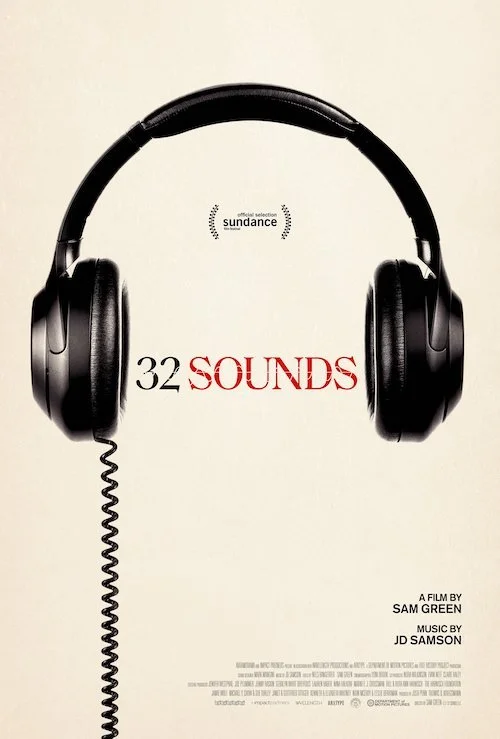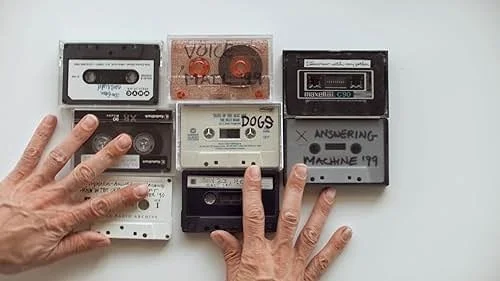32 Sounds
Written by Andreas Babiolakis
One of my favourite pieces of musical trivia is how Icelandic icon Björk’s album, Vespertine, came to be. She predicted that music was going to migrate onto the computer as a predominantly digital medium (sure, you could access music online for years at this point, but albums were still accessible via CDs, cassette tapes, and even records, even though the latter seemed like it was on its last legs at this time). With the rise of peer-to-peer piracy and the shift to digital consumerism, Björk wanted to ensure that her then-latest album didn’t lose any information when being listened to in any format since downloaded audio files at the time didn’t quite capture the fullness of other listening methods. So she explored the use of microbeats to create an album that would sound the same no matter how you listened to it, since the microbeats were easily transferable when downloaded and would sound as prominent through a car stereo, a record player’s setup, or a computer’s speakers. This kind of innovation leads to fascinating results that produce art in ways we’ve never experienced before, and it’s meant to solve an existing problem; there’s nothing quite like when brilliant minds are artists, too.
That’s the first thing I could think of when I was watching Sam Green’s documentary film 32 Sounds: an exploration of the experience of audio and the science behind the ability to hear and attentively listen. I cannot begin to describe what an absolute pleasure this film was to witness, and part of that is because I listened to Green and musician JD Samson’s suggestions to watch 32 Sounds with the use of headphones (although there is an auditory option to watch the film via a home sound system or external speakers of any sort). I was swept away by the sonic palette present in the film as my ears were treated to lush melodies, panning drones and scattershot, rippling cues, abrasive cacophonies that I could feel in my teeth, and even the inexplicable. There are multiple times where the film implores us to close our eyes and take in whatever sounds are present, and one of these experiments literally sent shivers up my spine because of how much I got lost in the soundscape surrounding me; the illusion came alive. What a glorious experience this film was. In short, 32 Sounds is just a documentary about how we explore sounds via recordings, art, and as human beings. It is loosely inspired by 32 Short Films About Glenn Gould, but even so I’d say it only bears the resemblance of having as many listening experiences to relish in. That’s basically it, and yet it is futile to even try to narrow down what 32 Sounds sets out to achieve because Green himself never tries to focus on just one part of his quest to explore all things sound, and so neither will I with my summary.
How does this relate to Vespertine? Similarly, Green and company were exploring a problem: how far speakers have come, and the brick wall sound technology faces when it comes to progressing even more. 32 Sounds implements what is known as binaural sound implementation, and many of the sounds present are recorded via a “dummy head microphone” (what looks like an Oscar statue head that’s decapitated and impaled on a stick to hold it up), which Green and company have graciously named “Johan Christoph”. Johan Christoph records sound via the emulation of how humans hear so the recordings can be transferred back to us in a similar fashion. General speakers cannot pull off this technology as well as headphones can, hence why it is borderline essential to watch the film in this way. If you really want to experience one of the most fascinating-sounding films I’ve ever enjoyed as it is intended, then don’t skip out on what makes the magic come to life.
32 Sounds is unlike many filmic experiences I’ve ever seen… or, rather, heard.
All of this is well and good, and 32 Sounds would have gotten a pass instantly for having a strong premise and an important, inspiring method of execution. That isn’t why 32 Sounds is transcendent. No. 32 Sounds goes more than the extra mile; the concept of a mile gets disintegrated when you notice how far this documentary is willing to go in order to explore the miracle of the auditory experience. The film gets into how the human ear works in a biological sense, through physics (and the concepts of even sub-audible tones that affect us despite us not being able to hear them outright), and even philosophically; this transitions into what hearing impairment is like (the film is also sensitive to viewers who are deaf or hard of hearing, with closed captions and cues, and even a section dedicated strictly to the inability to hear).
This would also make 32 Sounds a great film, but I’d argue this is even more than that. The part I love the most is how frequently 32 Sounds indulges in the avant-garde, acknowledging that we must witness as many auditory discoveries as possible in this particular film. I myself am fond of experimental and obscure music and films, so the film’s insistence that everyday people experience these breakthroughs with educational assessments attached is so important; 32 Sounds not only teaches you, it also encourages you to get daring with stepping outside of your comfort zone. Alongside the sound textures and noise (oh, how I adore those) was the inclusion of John Cage’s revered musical art piece “4’33”: a piece of performance art where Cage — or whoever is replicating this — sits at a piano for the length of time dictated in the name and doesn’t play. We’re forced to take in whatever sounds are now creeping into our ears and find harmony within the usual. 32 Sounds devotes a bit of time to Cage’s masterpiece and cuts its own sound out. At this time, I could hear my fiancé watching something on the television in the room next door, and it was within split seconds that I felt like her viewing experience became my own, precisely because of how the documentary prefaces Cage’s piece and its importance (I’m no stranger to “4’33”, but I can safely say that I have now experienced it in filmic form for the first time).
32 Sounds brings forth so many similar ideologies, including ones I was already quite familiar with (the need to record “room tone” while producing a film, so that motion pictures have the correct type of “quiet” to match the scene — and all shots recorded within a sequence — correctly), and those I was most certainly new to (the Japanese concept of “shinshin”, which is the sensation caused when snowfall layers the amount of silence there perceptively is). There are a myriad of breathtaking inclusions, no matter how prominent they are. Even though they are featured for brief seconds, some of my favourite musicians — Philip Glass and Tanya Tagaq — pop up, showing that Green is certain of who is aware of the capabilities of where auditory and musical art can go (Tagaq has also worked with Björk, case in point). I’d begin to list all of the things that wowed me about this film, but I also feel like a review can only do so much justice here.
All of this leads to Green wondering what all of this film is for (even though, I’d argue, that 32 Sounds up to this point is already a breathtaking experience); I won’t go into what Green’s conclusion is, but I will say that it is one of catharsis. Sounds can be studied as art, as a science, as an experiment. What matters most is the unifying element that auditory experiences all become our very own, and it’s through this realization that Green decides to find himself — and what is important to him as a healing person — in the concluding section of 32 Sounds. In case it wasn’t exquisite enough, 32 Sounds becomes painfully beautiful. My only concern is how difficult it is to watch such a brilliant documentary, because I think this must be witnessed to understand just how monumental this feels. Part of that problem stems from the awareness surrounding 32 Sounds (or the lack thereof). Here’s my way of putting it out there: this film is tremendous. I cannot sing its praises enough. I hope it gets the recognition it deserves, the accessibility to be seen/heard, and so much more. I love this film, and I dream you’ll get a chance to, too.
Andreas Babiolakis has a Masters degree in Film and Photography Preservation and Collections Management from Toronto Metropolitan University, as well as a Bachelors degree in Cinema Studies from York University. His favourite times of year are the Criterion Collection flash sales and the annual Toronto International Film Festival.







